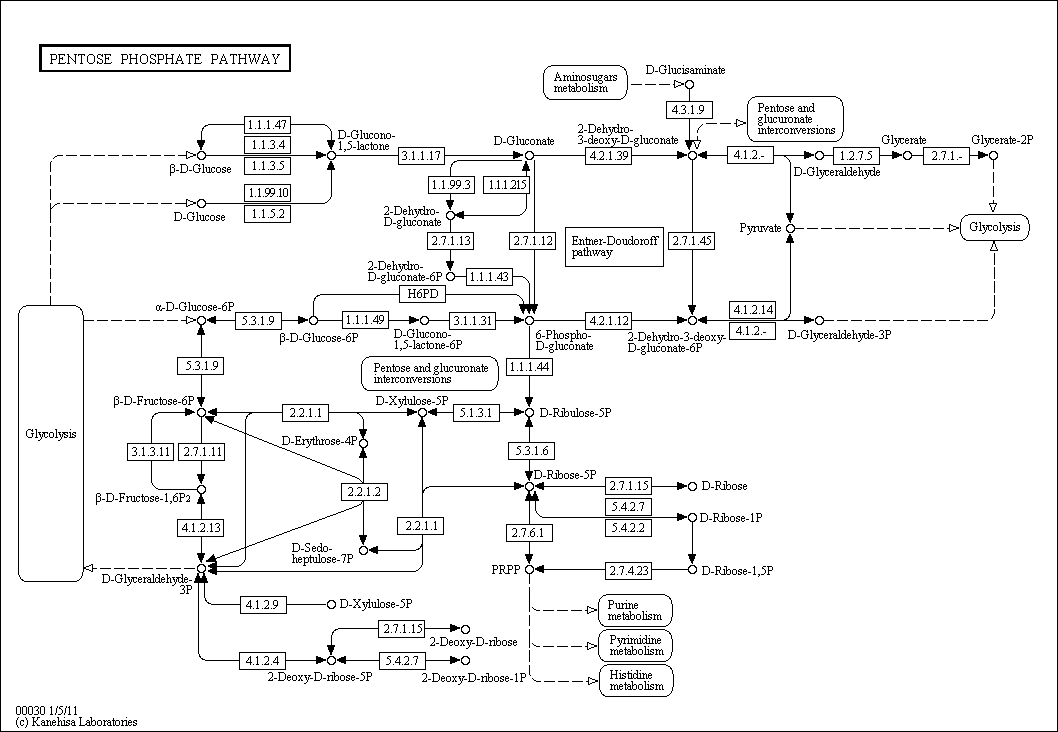Pentose Phosphate Pathway
Description: The pentose phosphate pathway is a biological process responsible for generating NADPH and pentoses, or 5-carbon sugars. This pathway is the primary producer of NADPH, yielding nearly 60% of the body's requirement. There are two distinct phases in the pathway.
The oxidative phase consists of a series of three reactions ultimately resulting in two NADPH molecules per cycle. This molecule is an important reducing agent and is used by the body to reduce reactive oxygen species, which can be toxic. NADPH is also involved in several anabolic pathways such as cholesterol and lipid synthesis. The starting products for this phase are glucose 6-phosphate, 2 NADP+ molecules, and a water molecule.
The second phase, creatively referred to as the non-oxidative phase, produces several different pentoses. This portion of the pathway consists of five successive reactions yielding monosaccharides such as fructose-6-phosphate and glyceraldehyde-3-phosphate.
The overall pathway is controlled by the enzyme glucose-6-phosphate dehydrogenase. This enzyme actively converts glucose-6-phosphate into 6-phosphoglucono-lactone which is the first step in the pentose phosphate pathway.

Related BMRB Molecules
- D-Fructose-6-Phosphate
- D-Fructose-1,6-Bisphosphate
- Gluconic Acid
- D-Glucono-1,5-Lactone
- D-Glucosaminic Acid
- D-Glucose
- D-Glucose-6-Phosphate
- Glyceraldehyde
- 6-Phosphogluconic Acid
- D-(-)-3-Phosphoglyceric Acid
- Pyruvic Acid
- D-Ribose-5-Phosphate
- D-Ribulose-5-Phosphate
For complete information about pathway, see KEGG [map00030]
